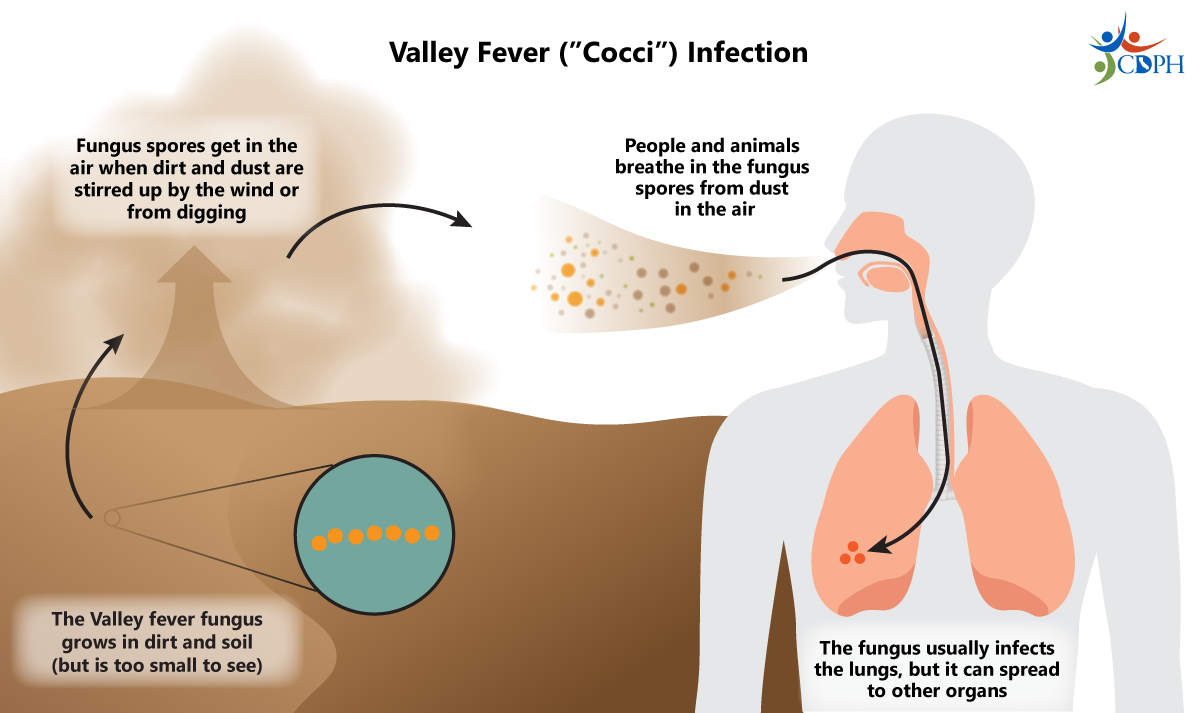Valley fever, caused by the inhalation of the fungus Coccidioides, is posing a significant threat to public health in the United States. Preliminary estimates developed by the Centers for Disease Control and Prevention (CDC) indicate that over 500,000 Americans could be affected by this disease each year. With the potential for its impact to be more than triple the size of previously cited figures, health officials are raising alarm bells about the increasing risk of Valley fever spreading in California during the summer and fall.
The California Department of Public Health (CDPH) warns that Valley fever, also known as coccidioidomycosis or “cocci,” primarily targets the lungs, leading to persistent respiratory issues like cough, fever, chest pain, body aches, fatigue, and tiredness. In severe cases, individuals may be forced to miss work, school, or other daily activities due to the debilitating symptoms.
The mode of transmission for Valley fever occurs through the inhalation of fungus spores present in dust and soil. However, periods of heavy rain following a drought can exacerbate the spread of the fungus, propelling it into the air and increasing the likelihood of infection. With California experiencing historic levels of winter rainfall, experts and CDPH officials are urging the public to be vigilant and differentiate Valley fever from other respiratory illnesses, such as COVID-19.
Research conducted by the University of California, Berkeley, in collaboration with CDPH, has revealed that drought followed by significant rain seasons boosts the transmission of the fungus responsible for Valley fever. Consequently, individuals with lingering respiratory symptoms lasting more than a week, especially if a COVID-19 test comes back negative, are advised to consult a healthcare provider to explore the possibility of Valley fever.
- To safeguard against the infection, public health authorities recommend the following preventive measures:
- Avoid outdoor activities in areas where Valley fever is prevalent.
- Stay indoors and keep windows and doors closed during dusty and windy conditions.
- Wet down soil and dirt before digging to prevent the dispersion of dust into the air.
- Consider wearing a properly fitted N95 mask when exposed to dusty outdoor environments in high-risk regions.
Rates of Valley fever infections are notably high in the Central Valley and Central Coast regions of California, encompassing counties such as Kern, Kings, San Luis Obispo, Fresno, Tulare, Madera, and Monterey. Nevertheless, authorities have observed an upsurge in cases across other parts of the state in recent years, including the Northern San Joaquin Valley and Southern California.
The draft figures presented by the CDC to the National Academies of Sciences, Engineering, and Medicine suggest that the impact of Valley fever on the American population could far exceed previous estimates. This alarming revelation underscores the urgency of raising awareness, implementing preventive strategies, and fostering early detection of Valley fever to protect public health.
As the risk of Valley fever continues to grow, public health officials, healthcare providers, and communities must collaborate to combat the spread of this insidious disease. By understanding its symptoms and adopting preventative measures, individuals can take proactive steps to safeguard their well-being and contribute to curbing the spread of Valley fever in the United States.





